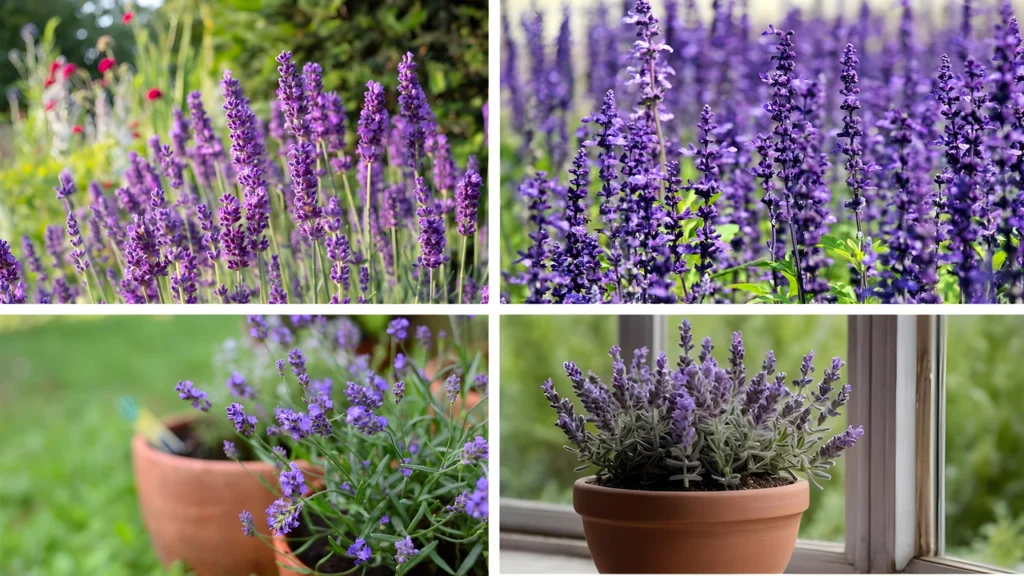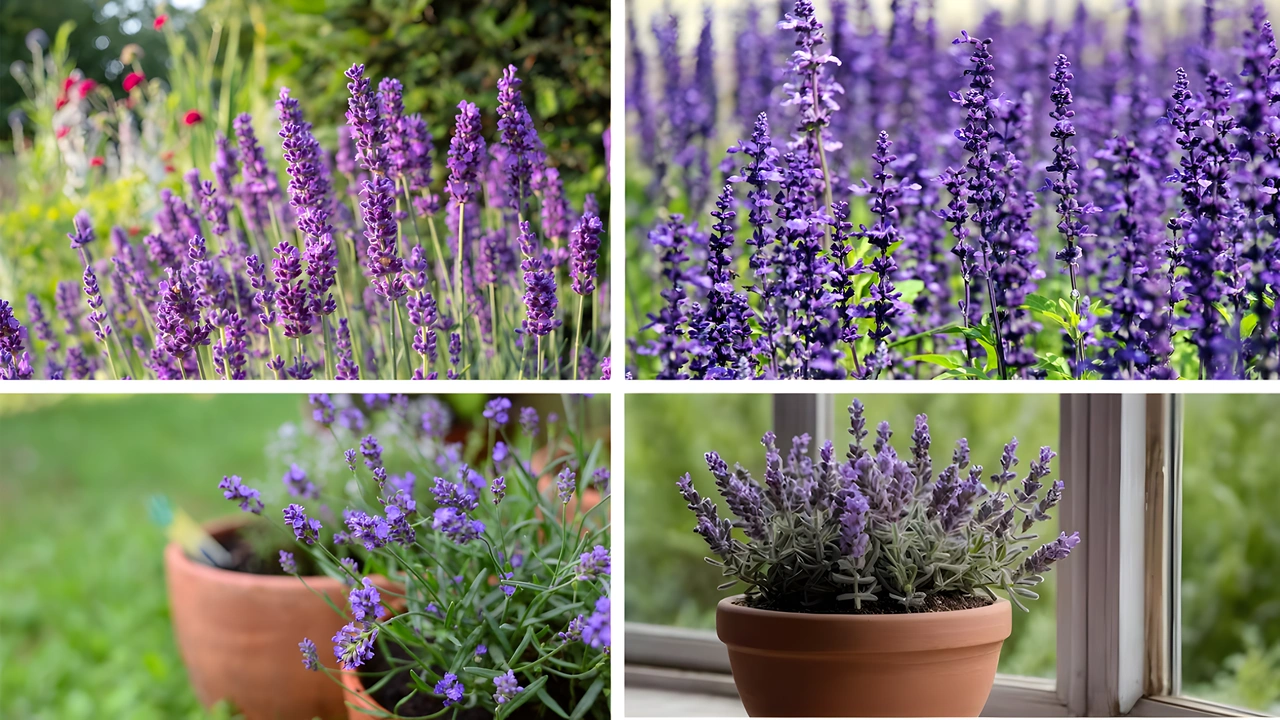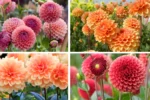Join on WhatsApp
Get the latest updates directly on WhatsApp – motivation, news & more!
Growing lavender indoors is a satisfying and sensory-rich experience for plant lovers. Not only does lavender brighten up your home with its vibrant purple blooms, but it also fills the air with its naturally soothing scent. This indoor lavender growing guide will walk you through every step of the process—covering everything from choosing the right lavender variety to mastering indoor care techniques that result in fragrant blooms and calming scents all year long. Whether you’re aiming to create a peaceful corner in your home or harvest homegrown herbs for aromatherapy and cooking, you’ll learn how to cultivate lavender indoors with long-lasting success.

1. Choosing the Best Lavender Variety for Indoor Growing
The first step in any successful indoor lavender growing guide is selecting the right variety. Not all lavender types thrive indoors. Some require more space, sun, or airflow than a typical room allows. For fragrant blooms and calming scents all year long, opt for compact, low-maintenance varieties.
Recommended Indoor Lavender Varieties:
- Lavandula angustifolia (English Lavender) – Compact and very fragrant.
- Lavandula ‘Goodwin Creek Grey’ – Excellent for pots and window sills.
- Lavandula dentata (French Lavender) – Performs well indoors with plenty of light.
Avoid larger varieties like Lavandula x intermedia, which are better suited for outdoor gardens. Choosing the right variety sets the foundation for your journey toward fragrant blooms and calming scents all year long.
2. Creating the Perfect Indoor Environment for Lavender
A crucial aspect of this indoor lavender growing guide is mimicking lavender’s native Mediterranean climate. Lavender thrives in bright, dry, and airy conditions. To cultivate fragrant blooms and calming scents all year long, your indoor space must offer:
- Direct sunlight for at least 6 hours a day (South or West-facing windows are ideal).
- Good air circulation to prevent mold and mildew.
- Low humidity levels, ideally below 50%.
If natural light is limited, consider supplementing with grow lights. Place a small fan nearby if the air feels stagnant. Creating this ideal environment is key for consistent fragrant blooms and calming scents all year long in your home.
3. Potting and Soil Requirements for Indoor Lavender
Soil and containers play a vital role in your indoor lavender growing guide. Lavender hates wet feet and thrives in poor, sandy soil. Proper drainage is critical to prevent root rot, a common issue when growing lavender indoors.
Ideal Potting Conditions for Indoor Lavender:
| Component | Ideal Choice |
|---|---|
| Container | Terra cotta pot with drainage holes |
| Pot Size | At least 8–10 inches wide and deep |
| Soil Type | Sandy, alkaline, and well-draining |
| Soil pH | 6.5 to 7.5 |
| Additives | Perlite, coarse sand, or small gravel |
Use a potting mix designed for succulents or cacti, or mix your own using 2 parts sand, 1 part potting soil, and 1 part perlite. Proper potting ensures your lavender has room to grow while maintaining the dry roots necessary for fragrant blooms and calming scents all year long.
4. Watering and Feeding Lavender Indoors
Watering lavender indoors is more about restraint than routine. Lavender plants are drought-tolerant and prefer to dry out between waterings. Overwatering is the #1 killer of indoor lavender.
Watering Tips:
- Water only when the top 2 inches of soil are dry.
- Water thoroughly but allow excess to drain completely.
- Reduce watering frequency during winter.
Feeding is also minimal. Apply a diluted liquid fertilizer (low in nitrogen, higher in phosphorus and potassium) once a month during spring and summer. Avoid heavy fertilization—it encourages leafy growth over flowers, reducing your chances of enjoying fragrant blooms and calming scents all year long.
5. Pruning and Maintenance for Healthy Indoor Lavender
Maintaining your lavender plant is essential to ensure continuous fragrant blooms and calming scents all year long. Regular pruning encourages bushier growth and better airflow around the plant.
Indoor Lavender Pruning Guide:
- Prune back one-third of the plant after the flowering cycle ends.
- Remove any dead or yellowing leaves.
- Pinch new growth during spring to promote a fuller shape.
Lavender can get leggy indoors without routine pruning. Keep your plant compact and tidy to improve its flowering potential and maintain the rich scent associated with this indoor lavender growing guide.
6. Common Indoor Lavender Growing Problems and Solutions
Even with care, you may encounter challenges when trying to achieve fragrant blooms and calming scents all year long. Being proactive and identifying problems early helps preserve plant health.
Common Issues and Fixes:
| Problem | Cause | Solution |
|---|---|---|
| Yellowing Leaves | Overwatering | Let soil dry out completely before watering again |
| Droopy Stems | Poor drainage or lack of sunlight | Improve lighting and repot with drainage mix |
| No Flowering | Too much nitrogen or low light | Reduce feeding and increase sunlight |
| Fungal Growth on Soil | High humidity or poor airflow | Add ventilation and use cinnamon as natural fungicide |
| Pest Infestation (e.g. aphids) | Dry indoor air and weak plants | Use neem oil or insecticidal soap |
Addressing these issues promptly is part of the commitment to grow lavender successfully for fragrant blooms and calming scents all year long.
7. Encouraging Year-Round Indoor Lavender Blooming
One of the most rewarding aspects of following this indoor lavender growing guide is coaxing your plant to bloom throughout the year. While lavender naturally has a blooming cycle, with some attention to detail, you can extend its flowering window.
Tips to Encourage Year-Round Blooms:
- Mimic natural seasonal light using grow lights during winter.
- Trim spent blooms regularly to encourage new flower spikes.
- Maintain a strict watering schedule—never overwater.
- Rotate pots weekly to ensure all sides receive even light.
- Keep plants in a cool, sunny room during the dormant season.
Consistency and patience are key. With proper care, even indoor lavender can produce fragrant blooms and calming scents all year long, brightening your space every month of the year.
8. Creative Uses for Indoor Lavender Blooms and Scents
Beyond aesthetics, this indoor lavender growing guide offers benefits that extend into everyday life. Lavender has a variety of practical uses thanks to its fragrance and soothing qualities.
Uses for Indoor Lavender:
- Aromatherapy: Harvest dried buds and add to sachets or sleep pillows.
- Cooking: Use culinary-grade lavender in teas, desserts, or infused syrups.
- DIY Beauty Products: Add dried flowers to homemade soap or bath salts.
- Natural Air Freshener: Place pots in bathrooms or bedrooms for a constant soothing aroma.
By nurturing your plant using this guide, you create access to natural, aromatic solutions that enhance your environment and well-being—all part of enjoying fragrant blooms and calming scents all year long.
Indoor Lavender Growing Guide: How to Cultivate Fragrant Blooms and Calming Scents All Year Long — Final Thoughts
This indoor lavender growing guide has covered every essential step to help you successfully grow lavender in your home, from choosing the right variety to ensuring proper sunlight, soil, and maintenance. When you carefully follow these practices, you’re rewarded with vibrant purple blooms and the relaxing aroma that lavender is famous for. Whether you’re seeking a touch of natural beauty, a homegrown herb for your wellness routine, or simply a way to create a more peaceful indoor environment, growing lavender is a fulfilling and fragrant journey. With a bit of planning and attention, you can truly cultivate fragrant blooms and calming scents all year long, transforming any indoor space into a tranquil, lavender-scented haven.


